Oral
Data Pre-Processing
ISMRM & ISMRT Annual Meeting & Exhibition • 10-15 May 2025 • Honolulu, Hawai'i

| 13:30 |
 |
0518. Effect
of Unified Reconstruction Algorithm on Inter-Scanner Variability
in Diffusion MRI
Q. Liu, A. Zhu, X. Wang, D. Erdogmus, L. O’Donnell, L. Ning,
Y. Rathi
Brigham and Women's Hospital, Harvard Medical School, Boston, United States
Impact: This study shows that inter-scanner variability
in diffusion MRI cannot be mitigated using a unified
reconstruction algorithm if the acquisition sequences
themselves are different. Prospective harmonization of dMRI
may benefit more from harmonizing the sequence itself.
|
| 13:42 |
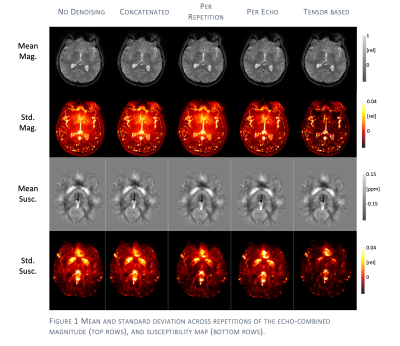 |
0519. Tensor
Based MP-PCA Denoising for Multi-Echo Functional Magnetic
Resonance Imaging Data
P. Fuchs, K. Shmueli
University of Antwerp, Antwerp, Belgium
Impact: The tensor structure of multi-echo fMRI data can
be exploited to perform tensor-based MP-PCA denoising, which
greatly outperforms conventional matrix-based MP-PCA
denoising, decreasing standard deviation and increasing
temporal SNR. Tensor-based MP-PCA denoising should improve
multi-echo fMRI and fQSM studies.
|
| 13:54 |
 |
0520. Direct
Reconstruction of Tracer Kinetic Parameter Maps in Abbreviated
Breast MRI
A. Brenes, Z. Tan, J. Bae, E. Solomon, E. Goesche, F. Knoll,
S. G. Kim
Weill Cornell Medical College, New York City, United States
Impact: This proposed direct reconstruction method aims
to streamline the complex image reconstruction and data
analysis processes of DCE-MRI and has the potential to make
DCE MRI a more efficient, faster, and accessible tool for
breast cancer exams.
|
| 14:06 |
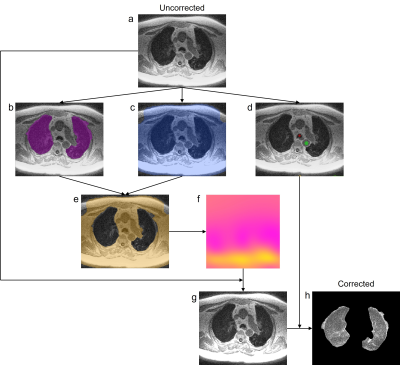 |
0521. Pulmonary
UTE Signal Intensity Normalization using Anatomical References

M. McIntosh, S. Gerard, J. Altman, E. Ramirez, R. Meyer,
S. Khodaei, C. Wharff, R. Bello, A. Kizhakke Puliyakote,
A. Hahn, S. Fain
University of Iowa, Iowa City, United States
Impact: This method may be used to develop quantitative
parenchymal density measures on UTE MRI as a biomarker to
assess cross-sectional differences in disease populations,
disease progression and treatment response without the
ionizing radiation inherent to gold-standard computed
tomography.
|
| 14:18 |
 |
0522. Pan-Contrast
Thalamic Nuclei Segmentation: Physics-Informed Image Synthesis
for Performance Across All Contrast Variations

R. Adams, E. Alzaga Goñi, P-T Yap, D. Ma
Case Western Reserve University, Cleveland, United States
Impact: UTN is the first thalamus segmentation tool that
works across different contrast types, matching the
performance of top tools, which are limited to white
matter-nulled images. This allows for volumetric thalamic
nuclei studies with any type of MR data.
|
| 14:30 |
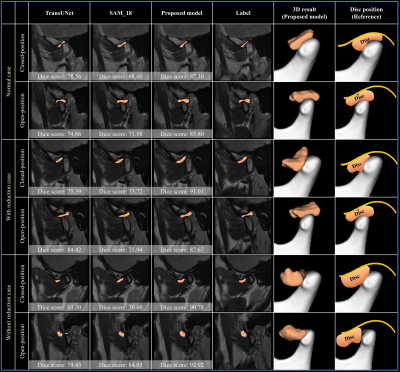 |
0523. Development
of a Semi-Supervised Approach for TMJ Disc Segmentationin MRI
Using a Foundation Model
E-G Ha, S-S Han, D-H Kim
Yonsei university, Seoul, Korea, Republic of
Impact: The proposed model has the potential to assist
dental clinicians by improving the accuracy and consistency
of TMJ MRI interpretation while reducing manual effort. This
approach could facilitate further exploration into automated
diagnostics across various imaging modalities, enhancing
clinical workflows.
|
| 14:42 |
 |
0524. SAM-driven
MaskNet for Left Ventricle Segmentation on Cine DENSE with
Unsupervised Domain Adaptation

S. Li, S-F Shih, J. Finn, D. Ruan, K-L Nguyen, X. Zhong
Department of Radiological Sciences, University of California Los Angeles, Los Angeles, United States
Impact: This research advances automated LV segmentation
in DENSE MRI by integrating UDA and foundation models,
leveraging cine SSFP images and established annotations to
improve deep learning model performance despite limited
availability of specialized MR images like DENSE.
|
| 14:54 |
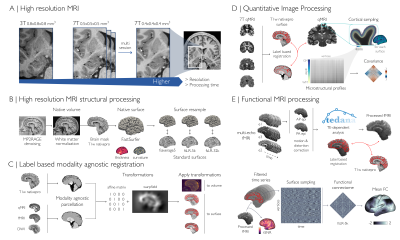 |
0525. A
multimodal processing workflow for ultrahigh-field MRI data
R. Rodriguez Cruces, A. Ngo, D. Gift Cabalo, J. Royer, Y.
Hwang, N. Eichert, P. Herholz, J. DeKraker, I. Leppert, C.
Tardif, B. Bernhardt
McGill, Montreal, Canada
Impact: This standardized workflow ensures consistent,
high-resolution analysis and generates sharable outputs for
large-scale data processing. It promotes reproducibility and
collaboration, advancing our understanding of brain
structure-function relationships and enhancing scientific
impact across the research community.
|
| 15:06 |
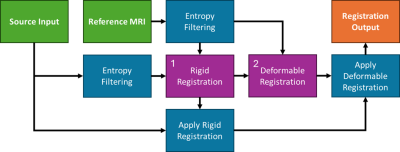 |
0526. Development
and Validation of a Multimodal 3D Brain Image Registration
Algorithm for Alzheimer’s disease and Related Dementias
J. A. Chong Chie, S. Persohn, P. Salama, P. Territo
Stark Neurosciences Research Institute, Indianapolis, United States
Impact: This study presents a 3D multimodal registration
framework invariant to image contrast, spatial resolutions,
and anatomical and functional variations; thus, enabling
direct comparisons of brain anatomy and function(s) across
subjects, while minimizing inter-subject variability,
permitting quantitative multimodal analysis.
|
| 15:18 |
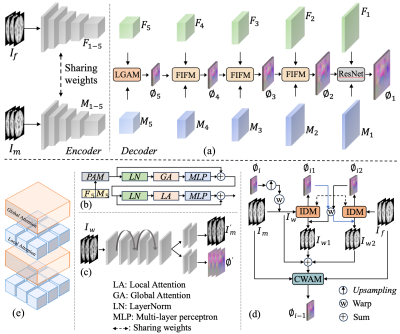 |
0527. Unsupervised
3D registration for multi-tasks with local-global self-attention
training
Z. Huang, N. Jiang, Y. Sui
National Institute of Health Data Science, Peking University, Beijing, China
Impact: We presents an unsupervised 3D image
registration method based on deep learning principles. By
incorporating local-global self-attention training, this
method is robust across different registration tasks. It
ensures consistently accurate registration results and is
applicable to multi clinical registration scenarios.
|
The International Society for Magnetic Resonance in Medicine is accredited by the Accreditation Council for Continuing Medical Education to provide continuing medical education for physicians.